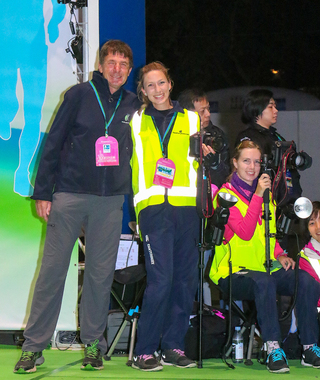Partner highlight
02 October 2018, 7am UTC
From sleepless to successful
What started as idle thinking on a sleepless night developed into a world-leading marathon photography company.
Francis Kay had photographed marathons in the past – but printing the photos and returning to sell them to runners within hours of the race was something he wanted to avoid. He wondered if race photos could be put on the internet so that runners could search for them by name or bib number and place an order online. This kind of search function would be a world first.
He found a programmer who said that this was indeed possible and the idea behind Marathon-Photos.com was established. The plan was to launch the website with the world’s first marathon of the new millennium – to be held in Hamilton, New Zealand on 1 January 2000.
Francis announced the new website in April 1999. The idea proved so popular that 12 events were photographed and online that year. The Millennium Marathon, organised by AIMS founding member Andy Galloway, became the first for the year 2000.
Since then Marathon-Photos.com has photographed 6667 events in 60 countries, including marathons, triathlons, cycle and ski events. It has photographed 30 million athletes and has more than 170 million images online.
“Our formula for success is simple,” says Francis. “We aim to exceed expectations.”
“We give equal importance to all events. We photographed 520 runners in the Australian Outback Marathon one week and 70,000 in the Sydney City2Surf two weeks later.
“Because we sell on results, we have to be good. We’re offering athletes a special memory of their day and we never lose sight of that fact. It’s also the reason customer service gets priority in our business.”
Strong relationships with organisers is also important and Francis says Marathon-Photos is proud of being very low-maintenance when it comes to race day, thanks to weeks of careful planning before an event.
Planning is everything, he says. The company has a pool of almost 2000 photographers worldwide – including his own daughters. Once the team is locked in, event preparation includes the logistics of getting to the event, then selecting photography and video positions that take into account the iconic features of the course and the direction of the sun.
After the race all race images have to be identified and placed online promptly so that athletes can re-live their event before they start training for the next one. With MarathonPhotos LIVE, images can be made available online during the event.
“We have a team of programmers constantly devising ways to improve the experience for athletes and we have a team in customer service dealing promptly with any queries,” says Francis.
Marathon-Photos.com is now in its 20th year.
“We’ve come a long way from the days of carrying 1300 rolls of film to Rotterdam Marathon to uploading more than half a million digital images from some of our big events. New technology has got us this far and we are always looking ahead to what is next,” he says. “There are some exciting developments on the horizon.”






